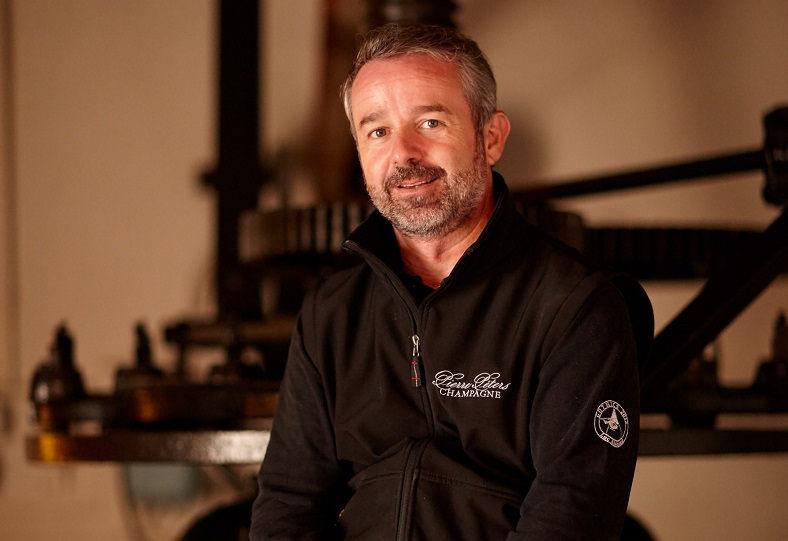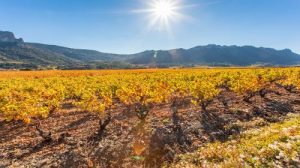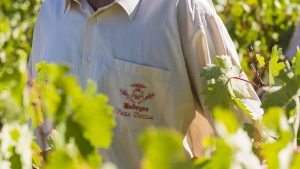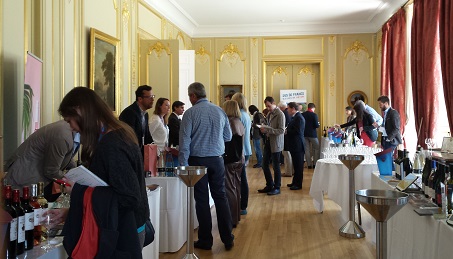
Established in the region for six generations now, the Péters family made the choice over one hundred years ago to produce its own blancs de blanc from Champagne’s greatest terroirs. After receiving his oenology diploma in 1993, Rodolphe Péters decided to make his way in the viticultural business, all whilst lending a hand to the domain. In 2007 he took over from his father, Jacques Péters, with the firm intention of continuing the family tradition without succumbing to any winds of change. He listens to one thing only…his terroir.
Listening to Rodolphe talk, it’s easy to grasp the deep admiration and respect he holds for the terroir of Mesnil sur Oger, globally recognised for its blancs de blanc. Its soil is made up of a particularly salty chalk, and this confers a great purity to the resulting wines. And it is in the name of preserving this finesse that he refuses to mature his Chardonnay in barrels, as has been practiced by some of his neighbours for a few years now.
Of the domain’s 87 parcels, there are three in Chétillons which never cease to surprise this wine maker. Since 1971, the domain has risen to the challenge of producing a vintage wine from these parcels every year. With not a small dose of modesty, Rodolphe explains that he doesn’t really have a role there, that it is the terroir that excels where others have not. With a high tolerance for extreme conditions, these soils are as capable of draining torrential amounts of water as they are surviving long periods of drought.
In the vineyards, there is careful thought in every action. A massal selection of the vines was kept, with Rodolphe’s father refusing to clone them even though this would have brought higher yields. This bet is now paying off, since some of the lesser used vines have begun to respond to the changing climate. And whilst the domain isn’t certified organic, all use of herbicides came to an end years ago and the most delicate soils are no longer worked.
According to Rodolphe, Champagne’s major strength is in blending. Aside from the exceptional Chétillons cuvée, he doesn’t hesitate to blend vintages and terroirs. His father always opted for malolactic fermentation, a process that reduces acidity levels, making the wine more approachable. Rodolphe questioned this, with the idea that his Chardonnay had much to gain in retaining some liveliness. Little by little, he has reached the point where 50% of his wines did not undergo malolactic fermentation in the 2019 vintage.
Discover the wines from Domaine Pierre Péters
Champagne Blanc de Blancs Grande Réserve
A 100% Chardonnay that is at once floral and lightly smoky, crafted by a rising star of Champagne.
Champagne Extra Brut Blanc de Blancs
A non-vintage Champagne, this Blanc de Blancs Extra Brut delights with its saline finish, pairing beautifully with well matured cheeses.
Champagne Brut Grand Cru Blanc de Blancs Cuvée de Réserve
A cuvée fizzing with freshness, you’ll pick up notes of citrus and aniseed…Twenty vintages in one bottle!
Champagne Brut l’Esprit Blanc de Blancs 2014
Persistent, light and elegant, this Grand Cru Champagne is best enjoyed as an aperitif or with subtle-flavoured dishes.
Brut Cuvée Spéciale Les Chétillons Blanc de Blancs 2012
An exceptional wine and a must-try Champagne to keep an eye on!
Pierre Péters, what do the guides say?
La Revue du Vin de France (2*/3)
Their blancs de blancs champagnes are classic in their floral freshness, whilst also expressing the power of their terroir, particularly in the case of the memorable Les Chétillons cuvée. This is one of the region’s best Chardonnays. At all levels, this range demonstrates a work of great precision.
Bettane+Desseauve
This domain’s winery is a place of vision and precision. Precision, among other things, in the control of lees and pressing, vision most notably in the development of their own yeasts. Add to this the art of blending, passed down for many generations – the Cuvée de Réserve, for example, contains more than 20 different vintages! This subtle meeting of tradition and modernity has found its balance. All of these cuvée are highly recommended. They share a complexity that oscillates between the land and sea, the point where the mineral becomes saline.



